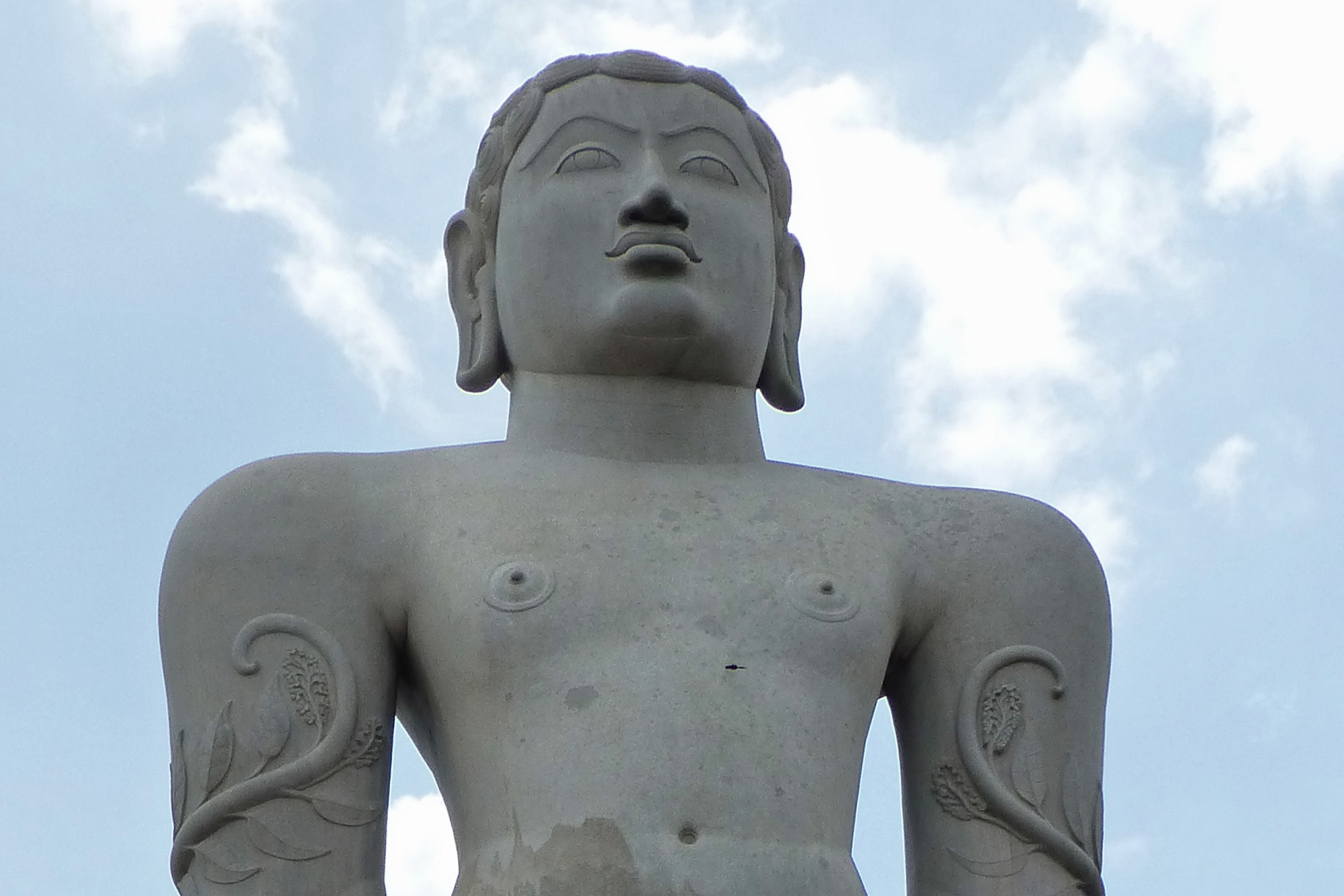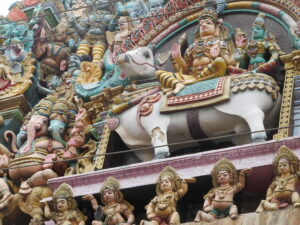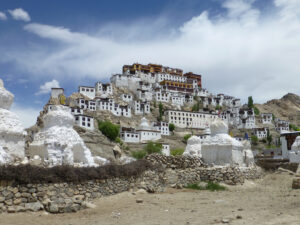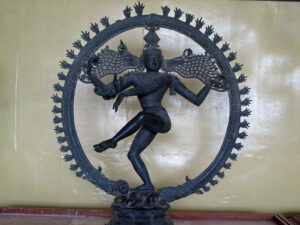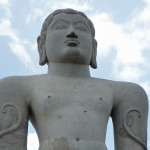
One of them is in his mid-50s, a bit stiff and very gangly, a welcoming grin on his face, his hand raised in greeting and dressed in jeans and cowboy boots befitting a frontier past – a treasured if not particularly aesthetic icon for his people .

The other is over 1000 years old, solid as a rock, his arms held straight down at attention, his mind serenely on higher things and, well, naked – not just demurely so, but full frontally – a revered image of a vital role model for his people.
The first is a scarecrow in construction, a metal scaffolding on which his massive clothes hang, looming over a landscape once dusty flatlands, but now filled in with art deco buildings and a carnival atmosphere.
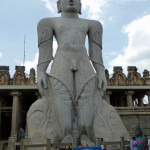
The other is carved from a solid granite boulder, partly concealed by a stone enclosure, on a mountain-top reachable only by a climb of 600-plus steep steps cut into the rock. His head peeks out at flatlands now growing rice and coconuts. The atmosphere around him is one of ritual devotion.
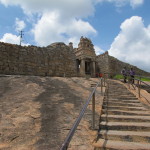
Literally and figuratively worlds apart, the 55-foot Big Tex, image of the Texas State Fair in Dallas, and the 60-foot Bahubali or Gomateshwara in Karnataka, honored guru among the Jains, do have one important thing in common at least. Size counts.
Jainism is a somewhat ascetic sect of Hinduism, one based on doctrines of non-violence and treating all living things as equally valued souls – whether insect, bird, mammal or man. Jains are often characterized as zealous in avoiding the killing of even an ant, a difficult demand if one wants to walk about, of course. In one Jain sect, devout adherents pledge to go about naked and can be found au naturel at least in the temples. But not all Jains are so zealous in these practices.
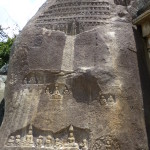
At the heart of their beliefs are the lineage of tirthankaras, or crossing-makers. These 24 gurus help adherents liberate their souls, i.e., cross from the material world to the spirit one. So, they are typically represented in statues at Jain temples so followers can appeal to them in prayer. Bahubali (Man of Strong Arms) was the second of the tirthankaras. His great example was forbearing to slay his brother in a conflict over leadership. Instead, he renounced his kingship and the material world for higher things. The last of the crossing-helpers was Mahavira, a Buddha-like master and the source of Jain teaching.
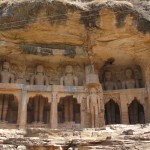
Ancient Jain temples seem less ornate at times compared to Hindu temples of the period, but the scale of their reverence is often large like this statue. At Gwalior, for example, on the western road to the hilltop, Jain leaders carved images of the 24 tirthankaras into the rocky faces of the hillside, over a span of hundreds of years from the 7th century on. Those icons range from the relatively small, a meter or so high, to three-storey tall images.
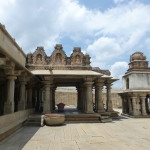
The temples on the hilltops of Sravanabelagola are relatively austere too. Yet they set a stage well for the breath-taking statue you see once you’ve climbed all those stairs, as the warrior who devised this tribute intended.
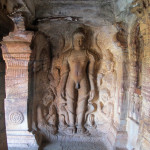
Monolithic, carved from a single block of granite, the figure is regal in posture, powerful as a warrior, lean in the waist and serene in expression, He is anatomically correct, naked as some of his followers, but somewhat idealized in form based on a template at least 400 years older (as at Badami). The restrained decoration is beautifully carved, from the regal hair and the somewhat whimsical spiral at the end of his penis, to the graceful vines climbing his legs and the simple conical anthills on which he stands.
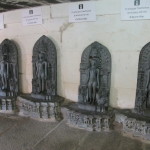
At his large feet, priests assist visitors in prayer, with brief rituals involving fire, oil and paint to mark their foreheads. Behind Bahubali, in the darkened, bare tunnels of his arcaded enclosure, stand bronze icons of the other tirthankaras. By legend, their like will not appear again for 300 million years. But for now they seem as enduring as their big, big brother in stone.
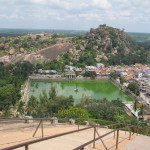
In Dallas, Big Tex is viewable for just three weeks in the fall of each year, when several million Texans and non-Texans swarm around him. Then he is stripped down to his skeleton and packed up till the next year. In the hinterlands of Karnataka, standing impassively for eons, Bahubali waits for the relatively few devout, and even fewer tourists, to ascend his steps.
It’s hard to imagine this figure ever crumbling, as its granite skin still glows in the right light, its brow is unlined and features immaculate. But erosion will do its slow work over time. As the Jains know, nothing is truly permanent in the world, even before the tirthankaras reappear. Not even this massive, naked guru.
(Also, for more pictures from India, CLICK HERE to view the slideshow at the end of the India itinerary page.)


